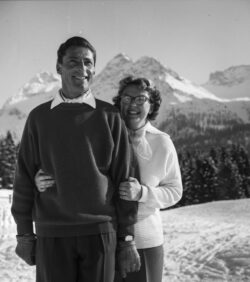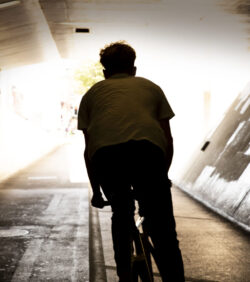The 2 legends
of the Rennbahn Oerlikon
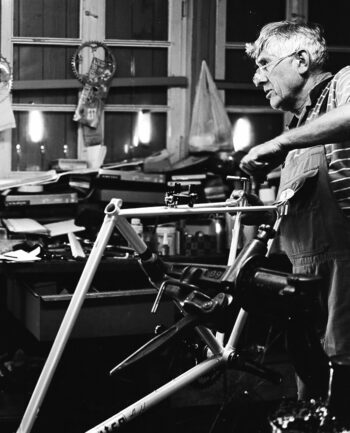
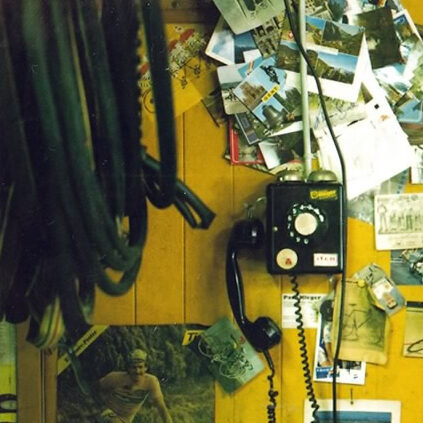
Cyclists in Switzerland are blessed with some of the best roads to ride. Those living in the region of Zurich have another bonus to enjoy and be proud of: the Rennbahn Oerlikon (Rennbahn means velodrome in German). Located a few minutes north of downtown Zurich, this marvelous track was built in 1912 and has been a fixture in Swiss cycling ever since. And the man who runs the track is as much a legend as the track itself!
The Rennbahn Oerlikon was built in 1912 in what then was a small village north of Zurich. Now city sprawl had engulfed Oerlikon, so it’s impossible to tell where Zurich city ends, and Oerlikon begins. In the early 1900s, track cycling was a trendy sport. Nearly every major city in Europe had velodromes, and Zurich was no different. The Oerlikon Rennbahn is an outdoor concrete track and 333 meters long. It has hosted World Championships in 1923, 1929, 1936, 1946, 1953, 1961, and 1983. The famous road races of the Zurich Championship and “Züri-Metzgete” ended on the Oerlikon track. It was always a rush to see the racers enter the main gates at 40 km per hour to the spectators’ cheers in the stands. I had seen it in 1996 when Lance Armstrong got second in the sprint at the finish of the Zurich Championship. That was two months before he was diagnosed with cancer. Imagine competing at such a high level with cancer-riddled throughout your body and not knowing it.
During the 1950s, the track was very popular due to Hugo Koblet and Ferdi Kübler’s great rivalry. And just then, Giuseppe Guerini opened a little bike shop at the doors of the Rennbahn. Guerini was Hugo Koblet’s mechanic for many years and ran the bike shop at the track. Around 1967 the word got out that the shop was for sale. At that time, there was a bike racer named Alois Iten. He started racing in 1959 and had competed in the Züri-Metzgete eight times. When the brother of Alois Iten heard of the sale, he suggested Alois buy it. As he was no stranger to the track and saw the value in the centrally located shop, Mr. Iten decided to take over the bike shop. Little did he know he would be taking over the management of the velodrome as well.
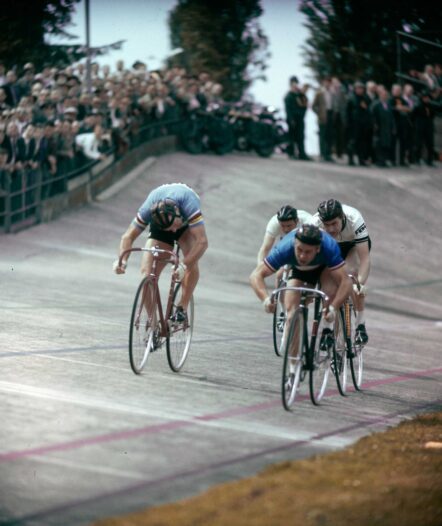
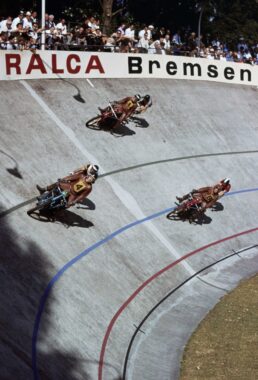
The cycling world championship of 1961 at the Oerlikon velodrome. The track is one of the last offering Steher racing, where cyclists ride directly behind custom-built Yamaha motorcycles up to 100 km per hour.
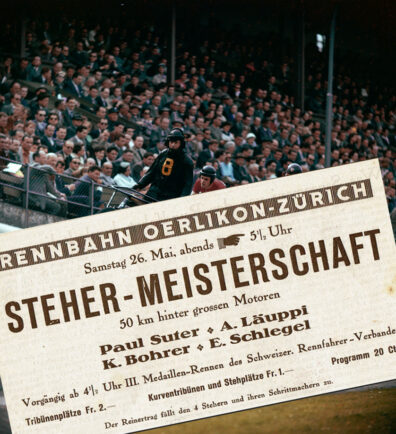
A magical adventure into the past
The Iten bike shop at Oerlikon is a magical adventure for those who appreciate cluttered-filled cycling memorabilia. There is so much to see in such a small area, make sure you have enough time to visit this gem. Walls are covered with old posters, photos, postcards, helmets, tubulars, rims, wheels, tools, jerseys, and a vintage phone that, till this day, I haven’t asked if it works. The shop is not easy to walk through, and that’s just how we like it. One has to be mindful of their next step as there might be something under foot of value!
When the Iten shop is open, usually on Saturdays, it has an endless flow of old-timers sitting out front chatting. The shop has become sort of a social meeting spot without coffee. Topicalities of the day, racing, complaints, the past, the future, and old jokes are all heard if you eavesdrop long enough. Mr. Iten is a goldmine of information on all things Swiss cycling current and past. After all, every up and coming amateur and pro will eventually pass through the gates of the Rennbahn. Everyone knows of the phenomenon “Six degrees of Kevin Bacon”. In Swiss cycling circles, it would be “Six Degrees of Alois Iten”. If he doesn’t know them or know someone who does, then they aren’t worth knowing!
Iten has sponsored several amateur teams during the 1970s-80s with some of the best racers. Along the way, Mr. Iten became the President of the Rennbahn Oerlikon association that pushed the effort to save the run-down track. By default, he became the manager for the upkeep along with many volunteers. It’s a big job and takes a village, as they say. Now in his late 70s, but looking at least 10 years younger, he is still active as always and remains the face of Oerlikon Rennbahn.
I saw Lance Armstrong 1996 when he got second in the sprint at the finish of the Zurich Championship. That was two months before he was diagnosed with cancer.
From endangered species to a track with future
The Oerlikon Rennbahn has had its ups and downs over the last one hundred plus years. There have been many times that the future looked doubtful. In the 1970s, there was talk of demolishing it for residential development. Later it was released from the historical Zurich monuments, which made its future even more perilous. Big real estate developers and city sprawl is always eyeing prime real estate, and the Rennbahn was a possible goldmine for the development of commercial real estate. Luckily, in 2012 the canton of Zurich listed the Rennbahn as historical monument, and it secured its future. In 2018-2020 the track underwent a five-million-franc renovation thanks to the City of Zurich. The old concrete of the stands and supports needed urgent care. With new paint, concrete, and facelift, the track’s future will continue for many years to come.
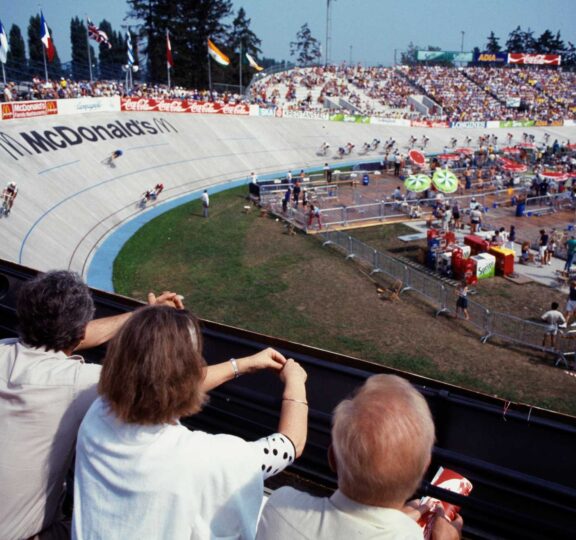
No other velodrome in Europe has held more races for longer than Oerlikon Rennbahn. With the new renovation completed, one can visit and compete every Tuesday night in late spring and summer. The track is one of the last offering Steher racing, where cyclists ride directly behind custom-built Yamaha motorcycles up to 100 km per hour. Also, once a year is the famous “Indianapolis in Oerlikon” when old-timer racing cars from 1890 to 1970s do laps on the track. Old Bugattis, Alfas, and many one-of-a-kind competition cars send their engine roars in the summer night air.
So, if you find yourself in Zurich or near the Zurich airport on a Tuesday night in spring or summer, visit the Oerlikon Rennbahn for a night you will remember. Or visit Alois Iten’s shop on a Saturday morning to meet two legends: the velodrome and Alois Iten!
Alex
